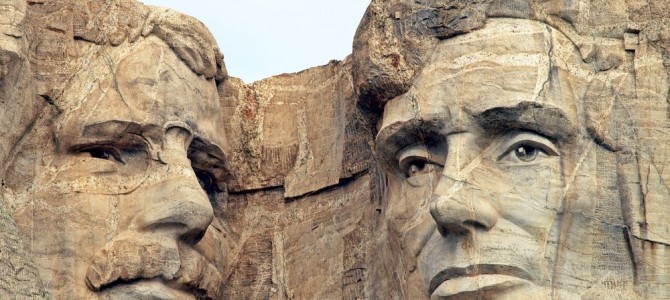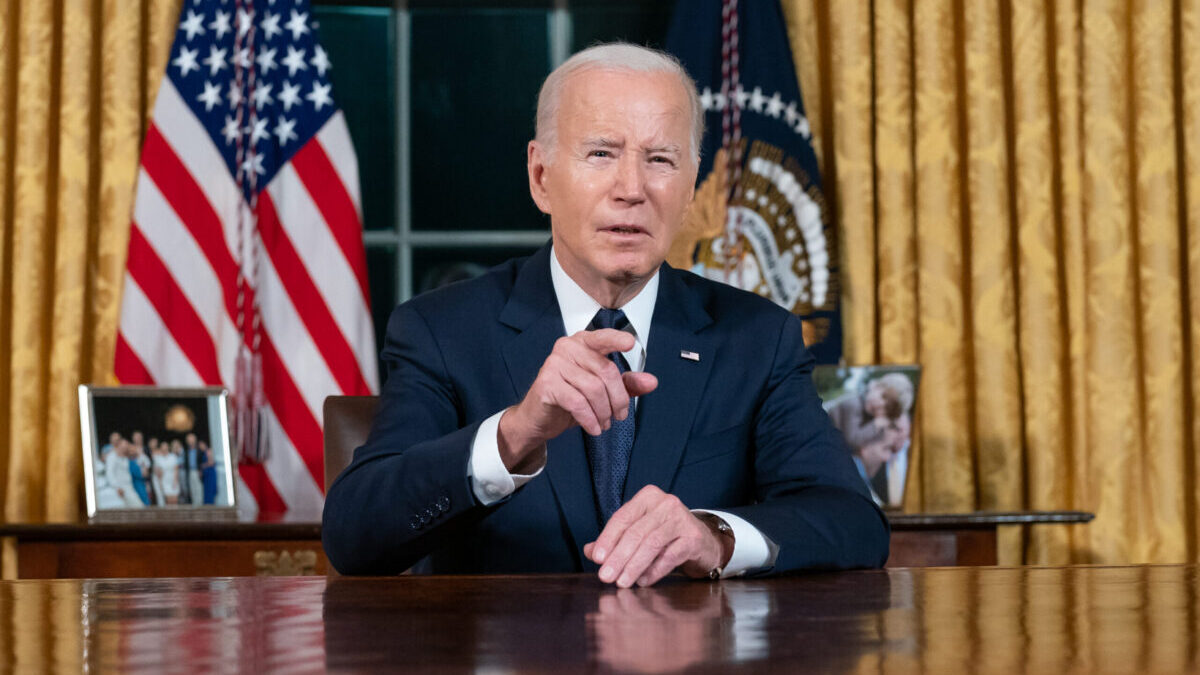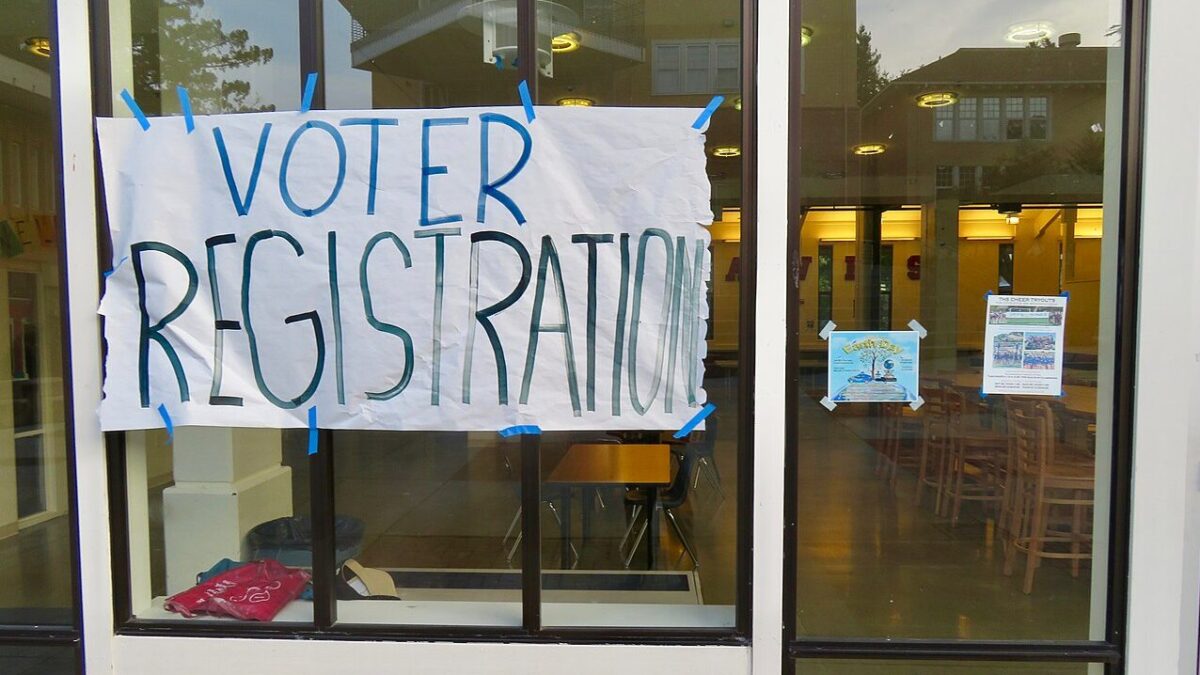
I spend my workday world within the First Amendment. My daily reading list is less Robert Ludlum and more John Roberts. Such is the career of a constitutional attorney: rewarding, yet intense. Summer, though, is the time to leave work behind, take to the road with family, and make memories at national parks and historical sites that remind us of what makes us Americans.
I was prepared for the long drives, the longer lines, and the late nights leading to early mornings with my gracious wife and four rambunctious boys. What I did not expect were the poignant lessons I learned about religious liberty.
Driving up to Mount Rushmore is exhilarating. First you wind through the Black Hills, dotted by sandstone outcroppings, Ponderosa Pines, and the predictable billboards begging you to spend your vacation budget all in one place. As you get closer, framed within the minivan windshield is a magnificent view of Washington, Jefferson, Roosevelt, and Lincoln high on a mountain.
The entrance to the viewing deck splits your attention between gazing at the men on the mountain and looking for your state’s flag along the avenue. Everywhere you look, you are immersed in the patriotic: the presidents, enormous visions of the impossible achieved, engraved in a cliff and keeping the American spirit alive.
A Surprise Lesson in Religious Liberty
Toward the end of the Mount Rushmore tour, just up from the artist’s studio, is the Borglum View Terrace. The bust of Gutzon Borglum, Mount Rushmore’s artist, is there, enjoying one of the best views of his carving. Behind the bust you will find a large, bronze plaque. This would be our first discovery of a tucked-away surprise lesson on religious liberty.
The park ranger explained that the plaque contains an historical narrative about our country, commissioned by the U.S. government. The words were to be carved into the side of the mountain beside Lincoln’s face, but plans changed.
My sons stood with me, reflecting on what was inscribed in bronze before us, a history we have been taught, but is so often hidden from our view. It addresses “Almighty God” and its preamble reads more like the “Battle Hymn of the Republic” than a history book. It begins:
“From this pulpit of stone the American people render thanksgiving and praise for the new era of civilization brought forth upon this continent. Centuries of tyrannical oppression sent to these shores, God-fearing men to seek in freedom the guidance of the benevolent hand in the progress toward wisdom. Goodness toward men, and piety toward God.”
This is how we used to talk as a nation. This is what we used to believe. This is what I want my sons to remember.
The plaque continues, hitting the high points of American history, noting that our government was founded to protect “the right to worship the Infinite according to conscience.” Poignantly, the account admits that the founding of our country and the preservation of our union “was accomplished like all our triumphs of law and humanity, through the wisdom and the power of an honest, Christian heart.”
Its author—William Andrew Burkett, a young Nebraskan who won a college scholarship for his essay—concludes boldly: “Holding no fear of the economic and political, chaotic clouds hovering over the earth, the consecrated Americans dedicate this nation before God. To exalt righteousness and to maintain mankind’s constituted liberties so long as the earth shall endure.”
That night, we watched those four famous faces lit brilliantly against the dark South Dakota sky as dozens of veterans whose service ranged from World War II to Operation Enduring Freedom in Iraq stood saluting a retiring American flag—a flag they personally defended amid the “chaotic clouds hovering over the earth.”
How Mutual Respect Fosters Freedom
The next morning, we were back in the car, headed west to Devils Tower, an impressive 867-foot tower of rock in Wyoming that holds the distinction of being the first national monument President Theodore Roosevelt signed into existence. Along the path is a sign typical of many you might see in a national park. Its nondescript, brown-painted wood with yellow lettering asks visitors to leave prayer bundles undisturbed.
Prayer bundles? In a park operated by the National Park Service?
Sure enough, as we follow the path, we begin to see small bundles hanging at seemingly random places from the fragrant Ponderosa Pines lining the tower. Devils Tower is sacred to Native Americans, who often come to offer prayers, visible in the form of bundles that hang from these ancient pines. At one point, the bundles were bright shades of red, blue, and yellow, but they have faded from exposure to the bright Wyoming sun. Yet there they are: physical expressions of prayer in a national park.
It dawns on me: this is how we integrate religious liberty into everyday life. The National Park Service works to protect the natural wonder that is Devils Tower, giving preference to those who hold the mountain sacred. Meanwhile, visitors like my troupe demonstrate respect for the free exercise of religion by these Native Americans by leaving their prayer bundles undisturbed. This is freedom in real life.
Going further, we saw another brown and yellow sign asking adventurous feet to stay on the provided paths, respecting ground sacred to Native Americans. My 11-year-old son, eager to rollick upon the huge boulders of stone lying at a tempting distance, asked, “Dad, why do we have to stay off the rocks? I know that land is sacred to Native Americans, but we aren’t Native Americans. We don’t share their religion. So why do we have to stay away?”
I explained to him that, in America, religious liberty provides both great freedom and mutual respect. The freedom allows Native Americans to worship at Devils Tower, even being afforded preference by the National Park Service.
For those who don’t share that religion, there is mutual respect. Inasmuch as Native Americans tolerate my place of worship, our family shows respect to the religion of Native Americans by not climbing on rocks that others view as sacred. Religious liberty defends our diversity. Sometimes respecting religious liberty takes a lot of work. Sometimes it just means staying on the trail.
I won’t soon forget my eight-year-old standing ramrod-straight, returning the salute of a World War II veteran at the base of Mount Rushmore, or the smiles of my five-year-old enjoying ice cream at the only stand near Devils Tower, or my three-year-old running through the white clay of the Badlands.
But what stands out to me from my family’s summer road trip is that I joined other ordinary men who, long ago, answered the questions of their sons as they walked along similar paths, reminding them that America’s dedication to religious liberty extends to all Americans. Without that commitment to freedom, our landmarks are just scenic rocks.









